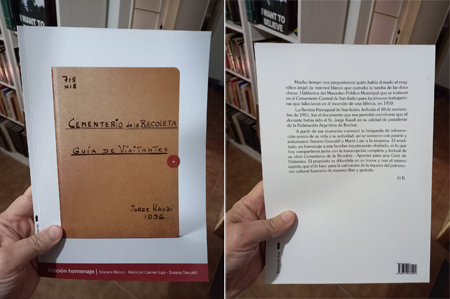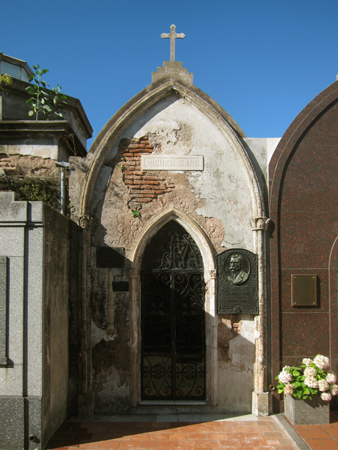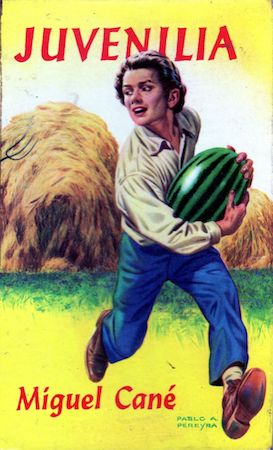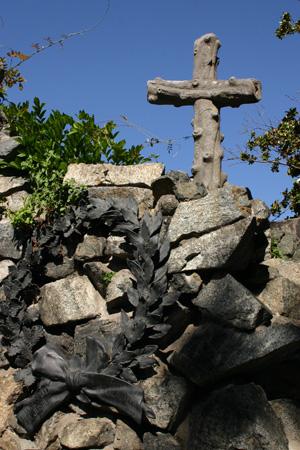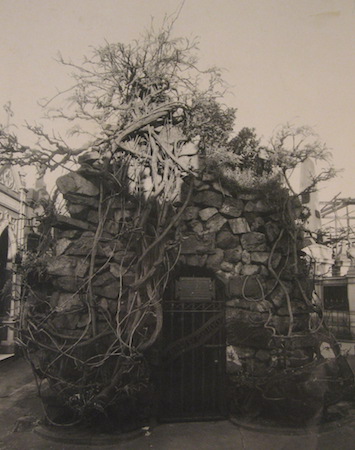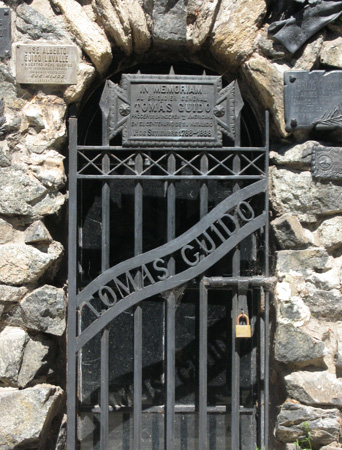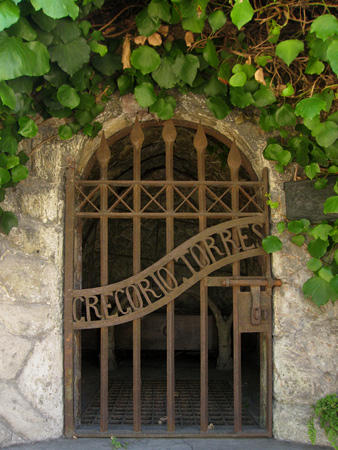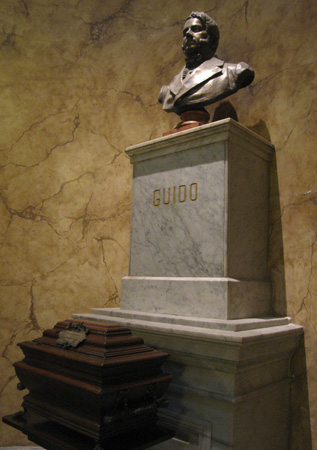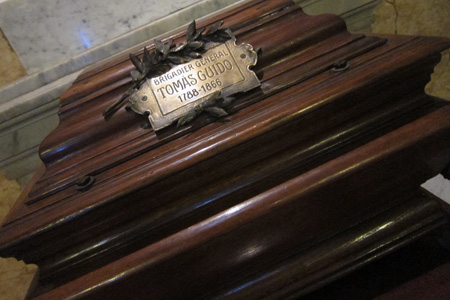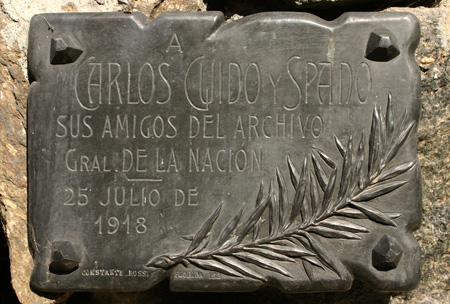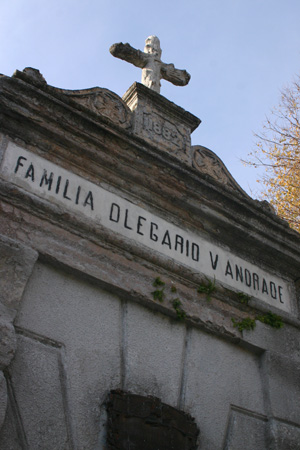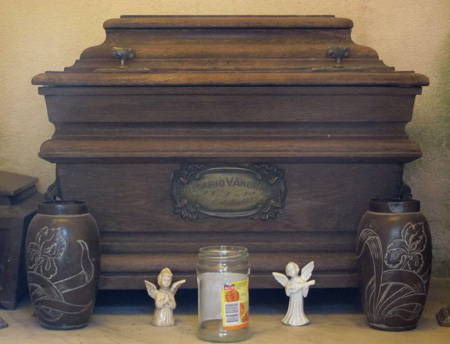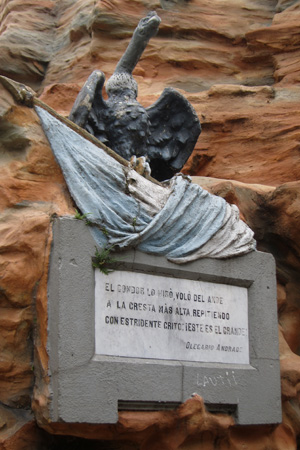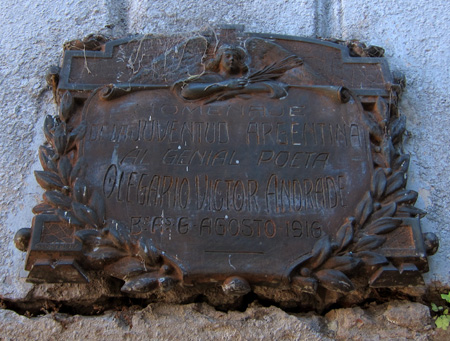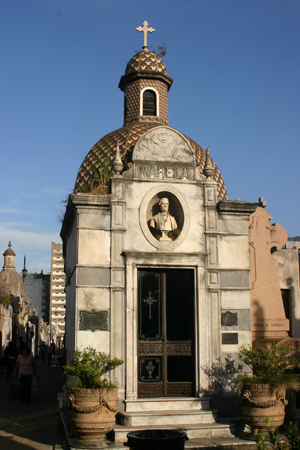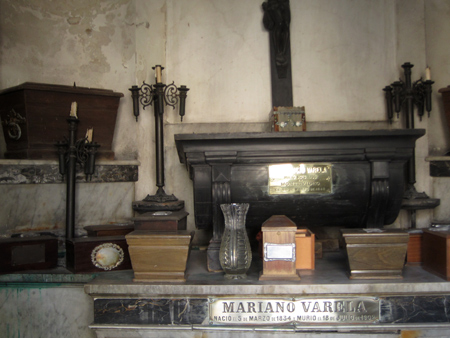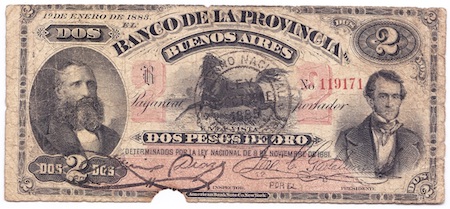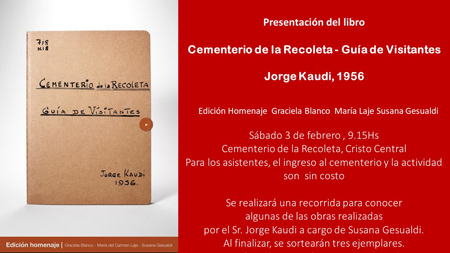
In 2009, Robert found one of the few copies available of a book by Jorge Kaudi titled “Cementerio de la Recoleta — Guía de Visitantes,” the first of its kind ever written about the cemetery. It’s amazing what treasures you can find in the public libraries of Buenos Aires!
Fourteen years later in mid-2023, a group of researchers decided to revisit this trailblazing text, created when no one believed in the cultural & touristic potential of the necropolis. Surprisingly, the process of that re-edition began far from Recoleta, in a place near the city of Buenos Aires called San Isidro. María Laje, one of the editors along with Graciela Blanco & Susana Gesualdi, tells us the story.
“It all began thanks to the curiosity of Graciela Blanco, who researches the cemetery of San Isidro. In the decade of the 1950s, a tragedy took place there: twelve girls died in a factory fire. They were buried together in a mausoleum funded by donations from the general public, & it has a very beautiful (statue of an) angel. Graciela has written much about the history of this event over the years & was looking to find who had donated the statue. About a year & a half ago, she discovered that the donor was Jorge Kaudi, president of the Argentina Federation of Pétanque.”
“From that moment,” continues Laje, “Graciela looked into who Kaudi was & discovered that he was a builder of funeral vaults who had written a guidebook to Recoleta Cemetery. She found a reference to Kaudi in a book by Elba Villafañe Bombal titled ‘Intinerario histórico de Recoleta‘”.
“At that point, Susana Gesualdi accessed Kaudi’s book in the Museo Hernández, & I transcribed it on my computer. We copied it word for word, we didn’t correct any single part,” affirms María Laje.

Life story
“Once the book had been found, we needed to uncover more biographical information about Kaudi. Oscar de Masi (heritage specialist & former president of the National Commission of Monuments, Places & Historical Assets) gave Susana a tip: Kaudi’s date of death. With this information we went to newspaper archives to find his obituary & to see if there was any other info. Kaudí had donated his publication to various newspapers, so we searched in Clarín & La Nación but found nothing,” states Laje.
This all changed when “someone appeared from the Family Search website who wanted to help provide information. I commented that were were investigating the life of Kaudi, & this person took it upon themselves to find him on that webpage. That’s how we found his date of birth & a detail… that he had been born in Montevideo, Uruguay. We asked a friend there to obtain a copy of his birth certificate for us.”
“Afterwards,” Laje continues, “we began searching for vaults built by Kaudi in Recoleta. Susana found a few, while between Graciela & myself, we combed through the cemetery several times. This is how we found 49 vaults signed by him, although we’re sure that more exist.”
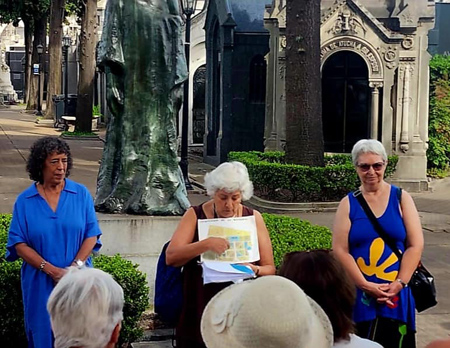
A pioneer
Concerning the guidebook previously mentioned, Laje points out that “it’s marvelous. Kaudi speaks 70 years ago about the importance of cemeteries like we do today. About how important the cemetery is, not as a final resting place, but somewhere you have to bring school groups, exactly the same as we say now. It’s unbelievable how he has fallen out of public memory.”
“This guy’s merit is remarkable, just for the effort in making that guidebook. No one had written anything before him, he was a pioneer,” continues Laje. She adds, “I believe we are going to do justice to the memory of Kaudi. Apart from your publication (Laje refers to our blog post mentioned & linked above), we found nothing else… except a reference that he had been president of the Argentine Federation of Pétanque. Recovering his life story was difficult. In fact, to this day we don’t know if he had any children. When he passed away, his wife & other family members appear in the obituary, but there is no mention of children.”
María Laje concludes, “It was an interesting undertaking that we’re satisfied with, mainly for remembering Kaudi & giving him his due recognition. In addition, we’re going to propose to Recoleta, where they are developing themed guided visits, that one should be about the works of Jorge Kaudi.”
The book “Cementerio de la Recoleta — Guía de Visitantes” by Jorge Kaudi originally appeared in 1955 with a second edition following one year later. That 1956 publication was the source for the reedition by those researchers mentioned above, & first appeared in mid-2023 as PDF available for free download. This year a physical edition was presented in Recoleta Cemetery on Saturday, 03 Feb 2024.
The authors gifted Marcelo a physical copy in September 2024:
1 Comment